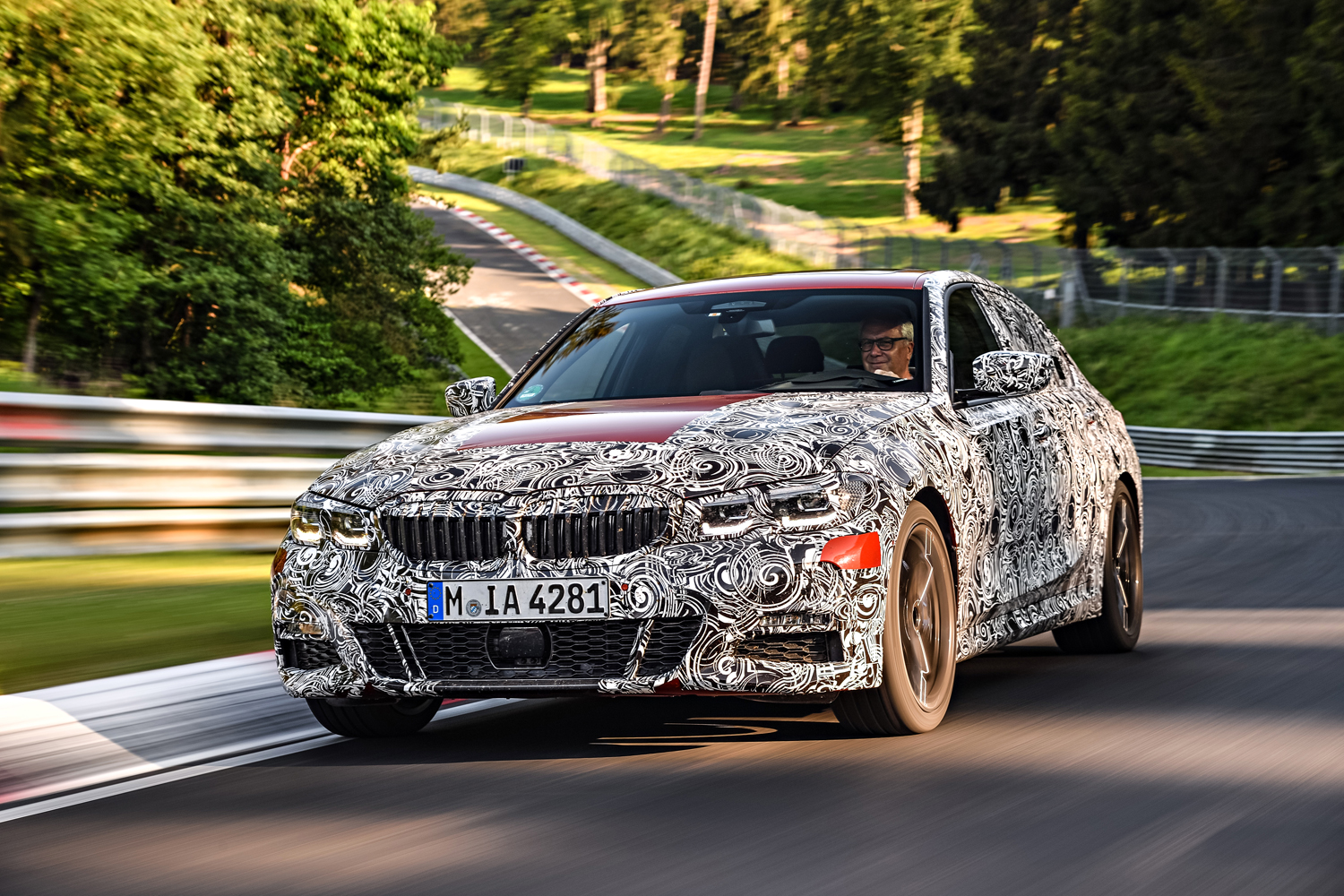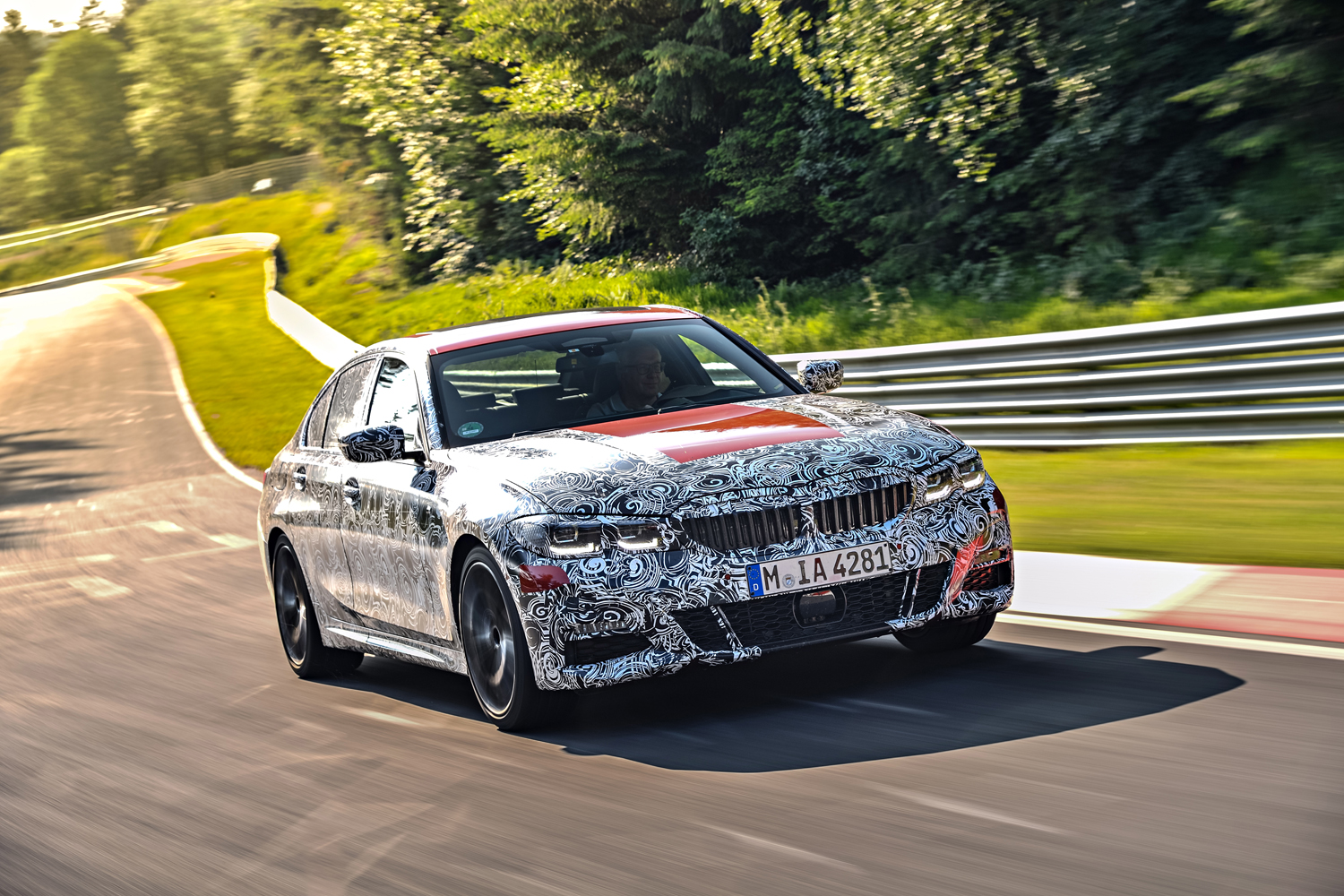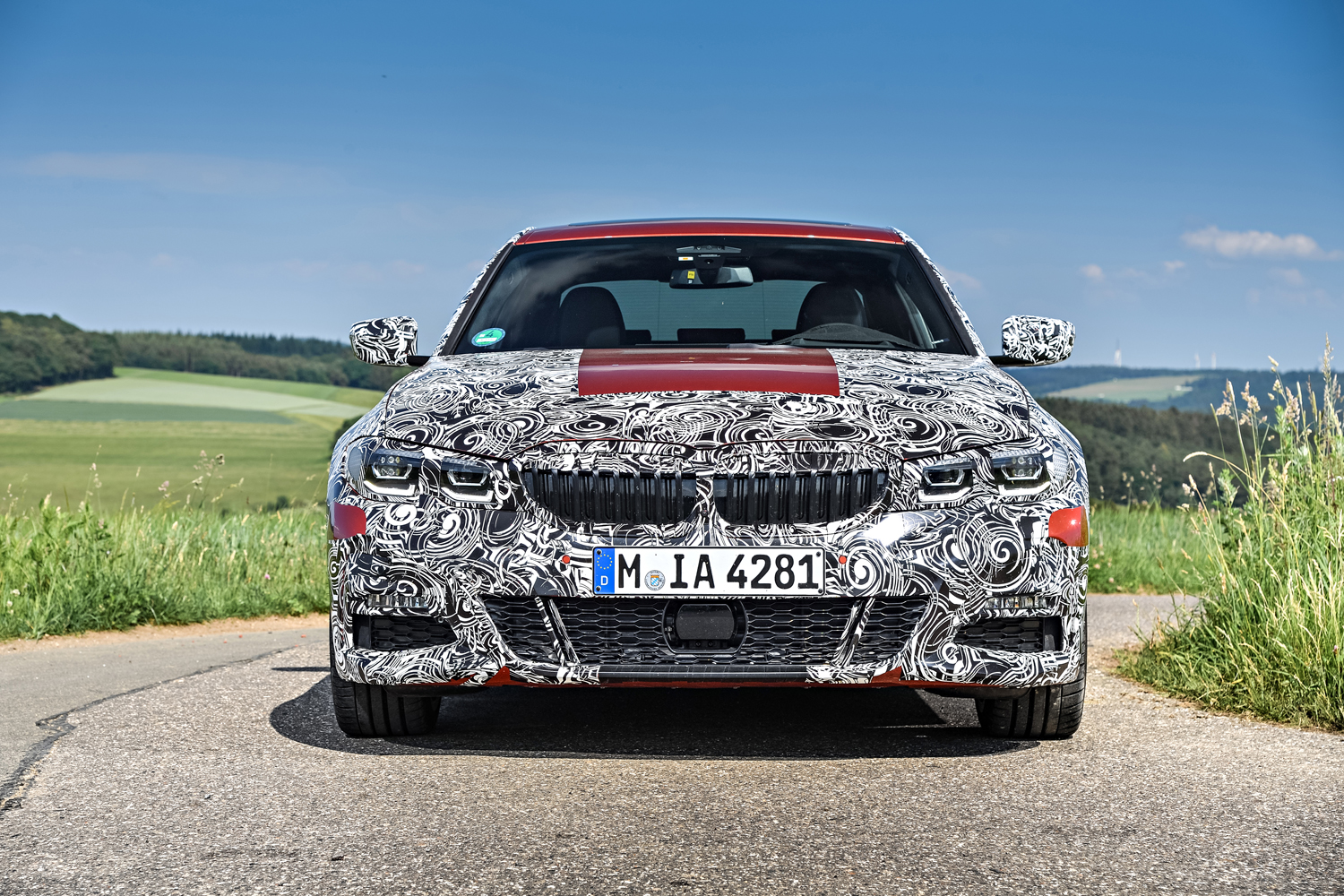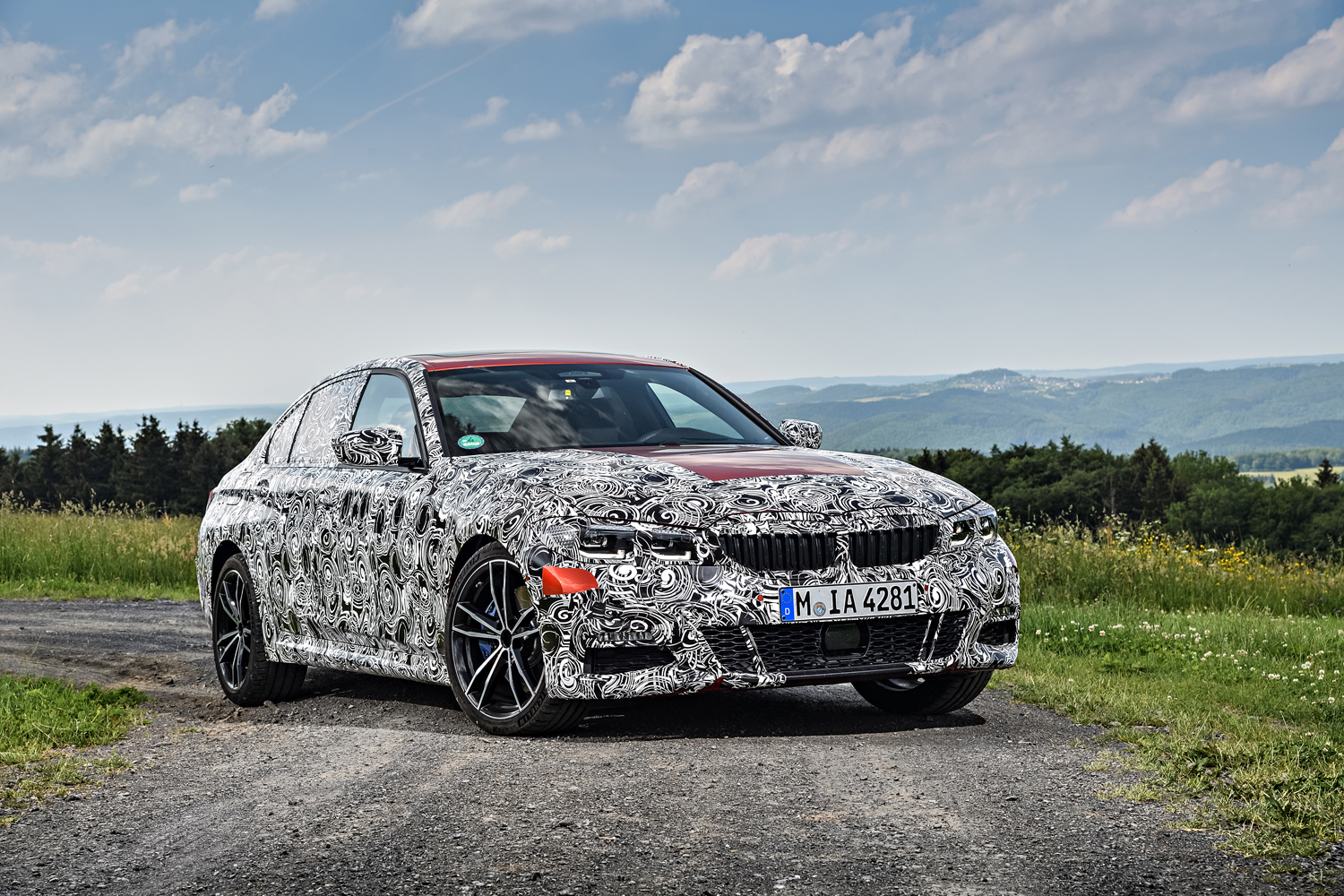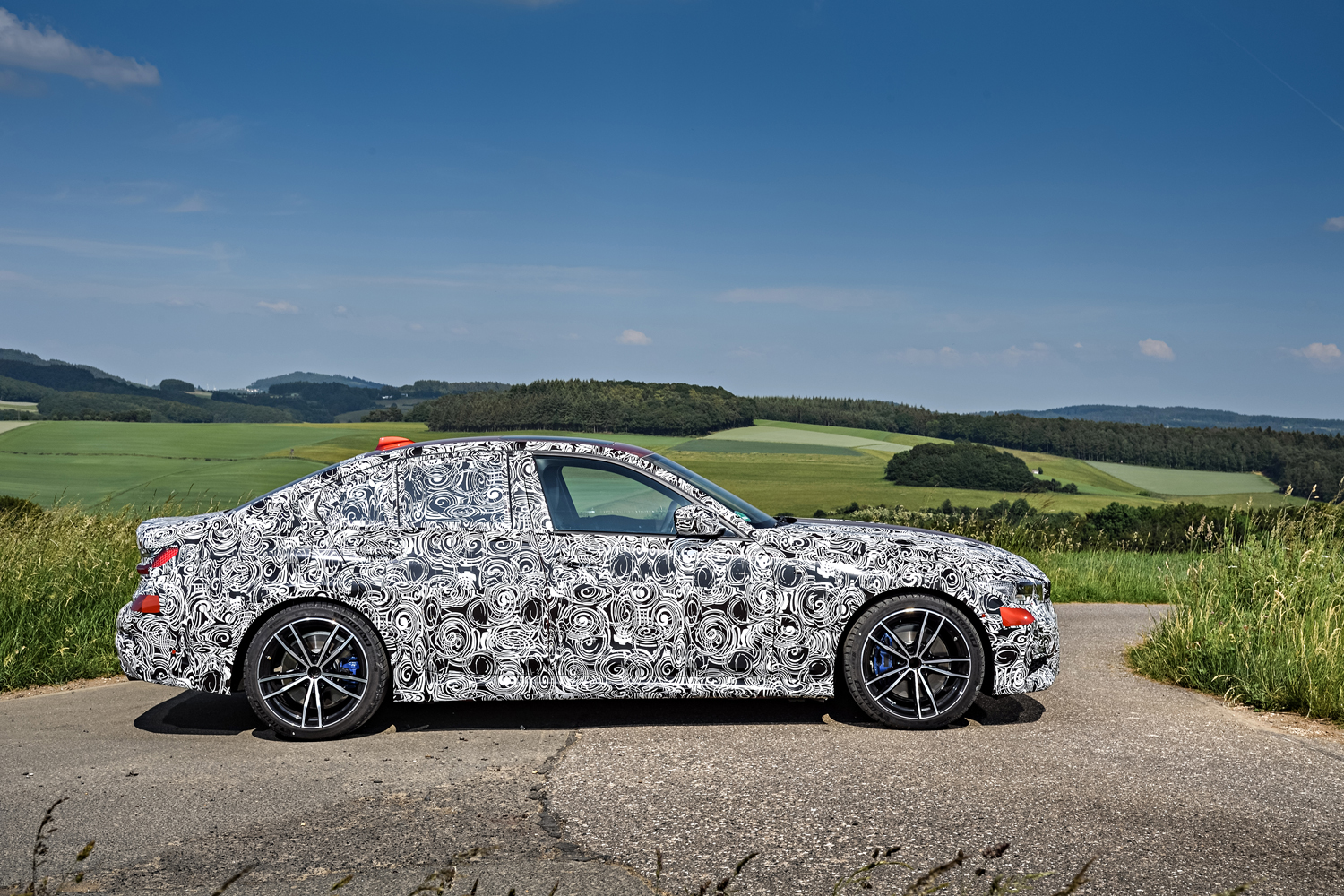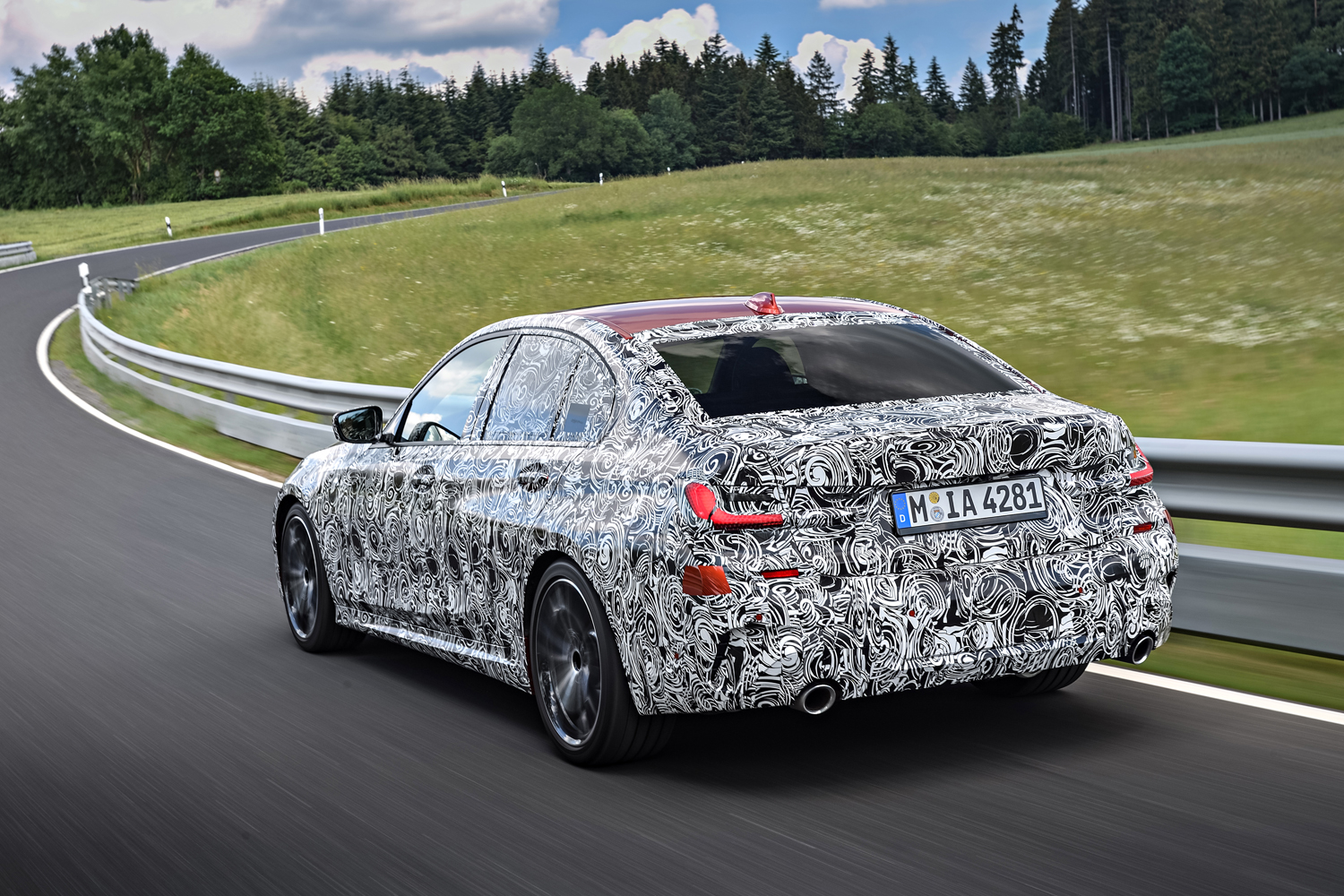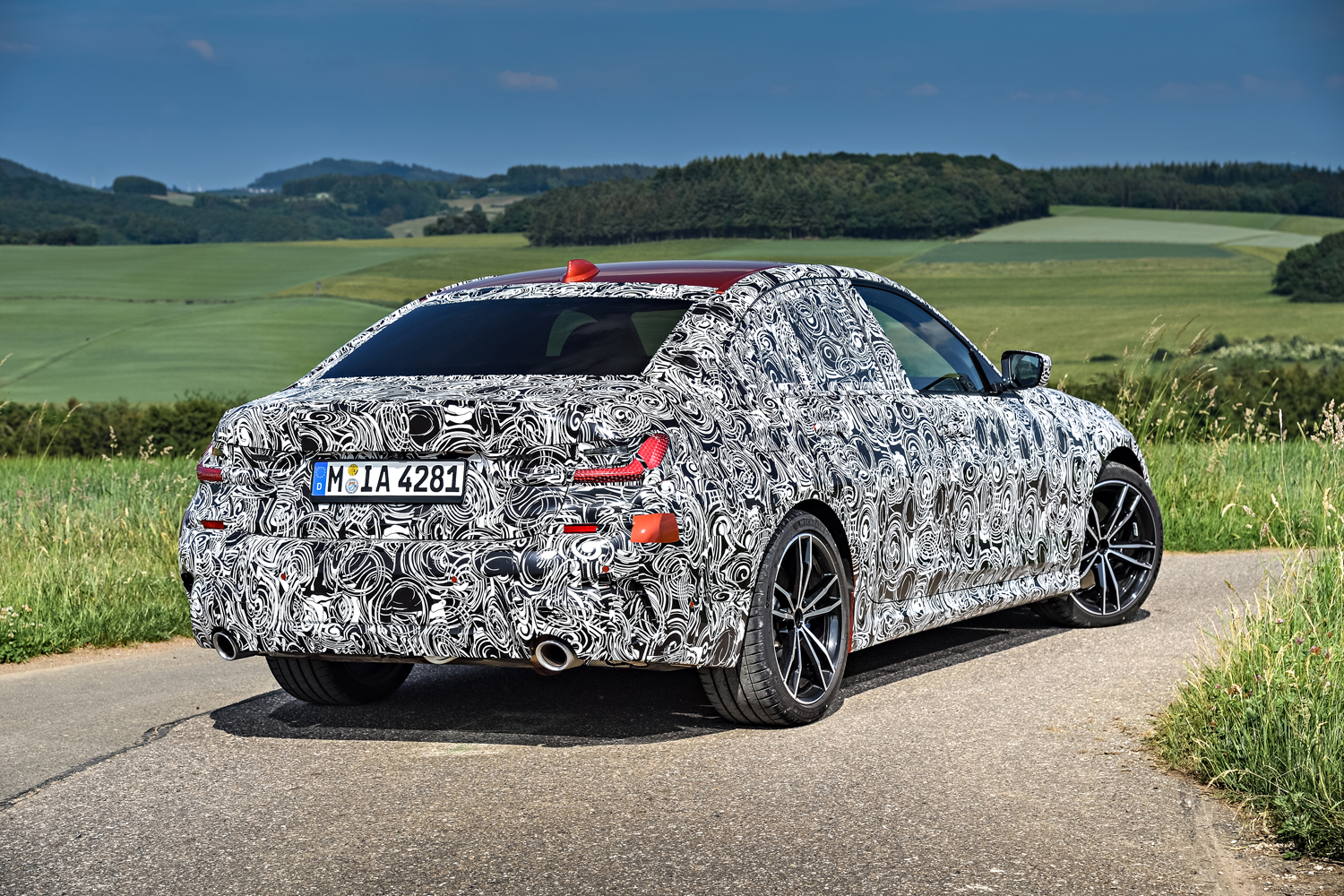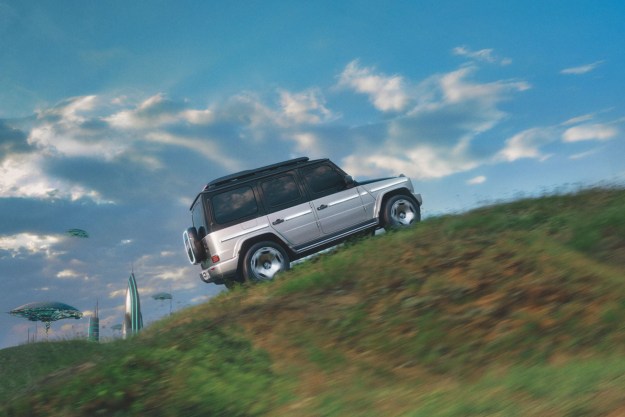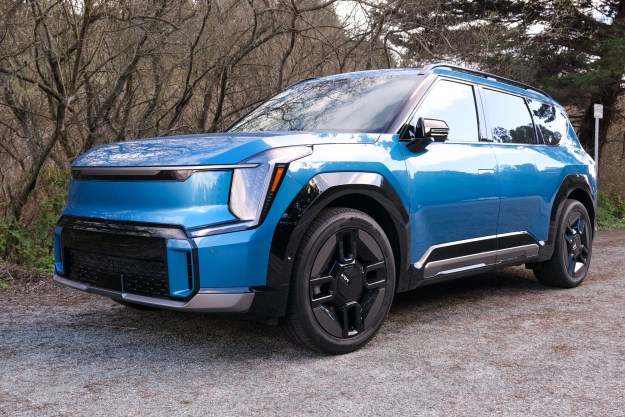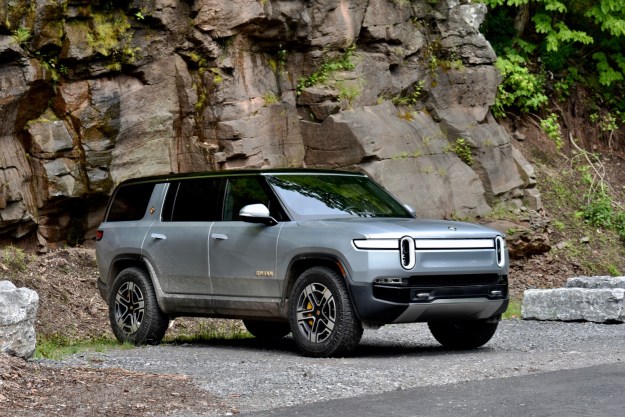After months of leaks, rumors, and spy shots, BMW has given us the first official look at the next-generation 3 Series sedan. Photos released by the Munich-based automaker show camouflaged test mules lapping Germany’s famously challenging Nurburgring Nordschleife track as part of the model’s shakedown testing phase.
Once the gold standard in the competitive sport sedan segment, the 3 Series lost its way when BMW introduced the current-generation model in 2012. Journalists and buyers criticized a steering that lacks feel and a chassis that went soft; the mid-cycle update did little to fix these issues. The company explains it went to great lengths to make the next-generation model more dynamic to drive by developing new suspension, steering, and braking components.
Engineers made the next 3 Series lower and up to 121 pounds lighter than its predecessor. They’ve made the body more rigid and tweaked it to achieve a perfect 50:50 front-rear weight distribution. They’ve also increased the track, which makes the car more agile — at least on paper. We’re looking forward to slipping behind the wheel in order to find out what the changes amount to in real life.
We’re expecting tech upgrades inside the car, including a new infotainment system and, possibly, gesture control technology borrowed from the bigger 7 Series. We’re also likely to see the list of electronic driving aids grow. We’ll have to wait until later to find out what BMW has in store, though.
Technical specifications haven’t been released, either. Without providing specific horsepower or torque figures, BMW promises the most powerful four-cylinder engine ever fitted to a 3 Series will power the next-generation model. It’s a unit that’s five percent more efficient than its predecessor. Top-spec models will continue to come with a straight-six engine. The plug-in hybrid and turbodiesel variants will return, too, though we might not see the latter in the United States. And, finally, recent spy shots suggest the 3 will offer a battery-electric powertrain sooner or later.
We don’t know when or where we’ll see the next-generation 3 Series. Considering BMW has kicked off its teaser campaign, we’d bet on the sedan making its debut either at the Paris auto show or the Los Angeles auto show. It will go on sale in 2019 as a 2020 model.
Editors' Recommendations
- BMW i4 brings the ultimate driving machine into EV territory
- 2020 Audi S6 sedan with performance-enhancing mild-hybrid tech will come to U.S.
- Horsepower, tech, or cubic feet? Have all three in the BMW 8 Series Gran Coupe

